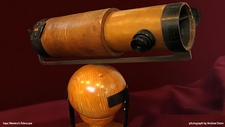History of Science

TEKS Objective
The student is expected to connect grade-level appropriate science concepts with the history of science, science careers, and contributions of scientists.
Essential Understanding
The student uses critical thinking and scientific problem solving to make informed decisions.
Science Background
History of the Philosophy of Science: Explorable.com (website) - Historical summary of the evolution of scientific thinking and endeavor over the course human civilization, from ancient philosophy to the modern process of doing science.
Signature Lesson
Create a Timeline of Famous Scientific Experiments: Microsoft (website) - Students connect their understanding of science concepts with scientific history by creating a timeline of a particular scientist that marks his or her major contributions to science and shows how those contributions impact our lives.
Create a Timeline of Famous Scientific Experiments
Microsoft (website), www.microsoft.com
- Supporting Lessons
- Extensions
- Assessment Ideas
- Literature Connections
- Related
TEKS - Additional Resources
Supporting Lessons
Leonardo's Machines: Science NetLinks (website) - Students explore the life of Leonardo da Vinci as a historical figure and explore his great scientific discoveries and inventions.
Leonardo's Machines
Science NetLinks, www.sciencenetlinks.com
Elaboration Lessons and Extensions
Thomas Edison Timeline: Crayola (website) - Imagine a world without light bulbs or sound recordings. Students learn about, and create a timeline of Thomas Edison and his most important inventions.
Assessment Ideas
Have each student identify and study science discoveries that have occurred during the past 10 years, and then organize these events in a timeline that begins at his/her birth date and extends to the present.
Literature Connections
Arquimedes and the Door of Science. Bendick, Jeanne (ISBN-13: 978-1883937126)
The Not-Quite World Famous Scientist. Hughes, Susan (ISBN-13: 978-1550416961)
Book of Black Heroes: Scientists, Healers, and Inventors. Hudson, Wade (ISBN-13: 978-0940975972)
Ext Women Scientists. Stille, Darlene (ISBN-13: 978-0516405858)
Additional Resources
History of Physics: Massachusetts Institute of Technology (website) - Links to information about various fields of physics, historically important experiments in physics, leading physicists, and more.
History of Physics
Massachusetts Institute of Technology (website), www.web.mit.edu
History of Chemistry: Le Moyne College (website) - Numerous links to classic texts describing key developments in the history of chemistry, biographical sites for important scientists, and much more. Listed in alphabetical order and/or by topic.
History of Chemistry
Le Moyne College (website), www.web.lemoyne.edu
TEKS Navigation
Grade 4
Need Assistance?
If you need help or have a question please use the links below to help resolve your problem.

Comments